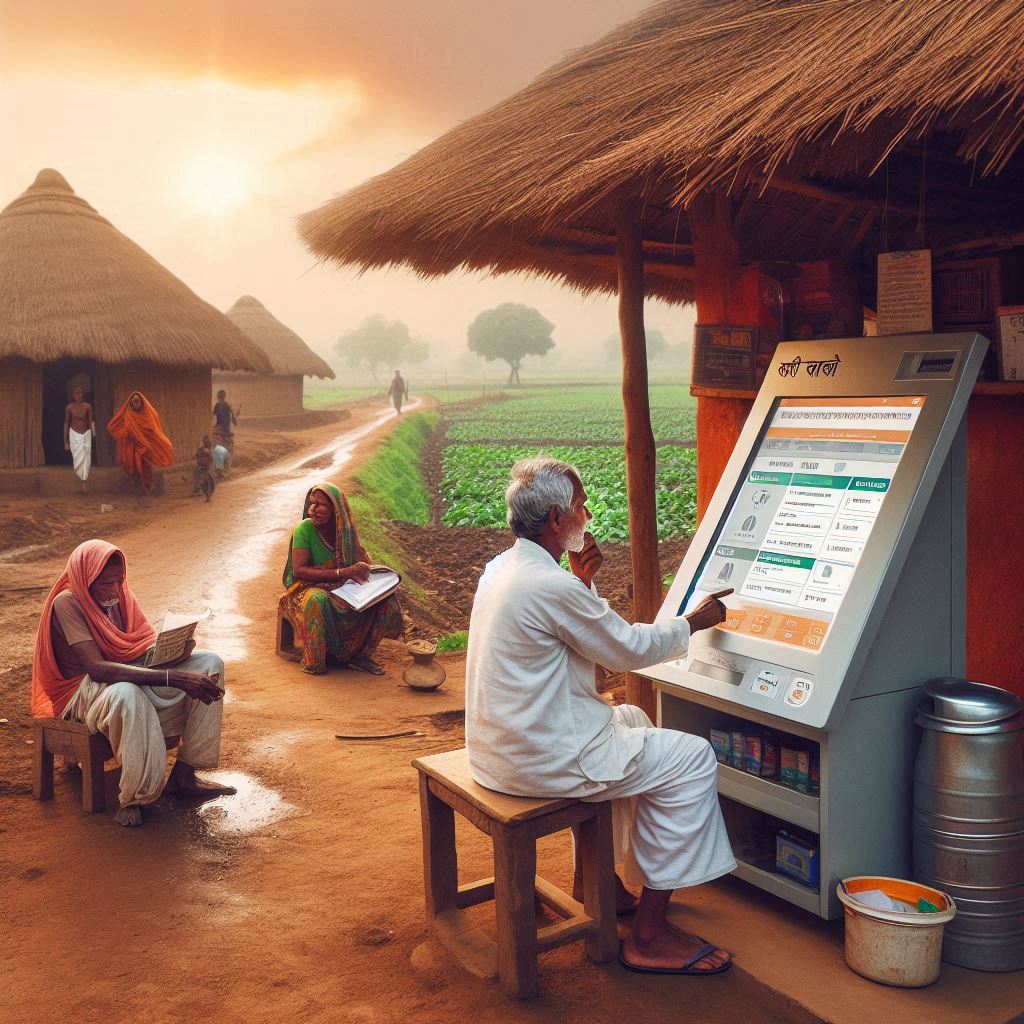India’s ambitious “Digital India” initiative, launched in 2015, aimed to transform the country into a digitally empowered society and knowledge economy. While cities have rapidly embraced this digital revolution, the program’s impact on rural India—where nearly 65% of the population resides—has been both inspiring and uneven. This blog dives deep into how the Digital India initiative has unfolded in Indian villages, showcasing its triumphs, challenges, and what lies ahead.
The Vision Behind Digital India
Objectives of the Program
Digital India was envisioned with nine key pillars:
- Broadband Highways
- Universal Access to Mobile Connectivity
- Public Internet Access Program
- e-Governance: Reforming Government through Technology
- e-Kranti: Electronic Delivery of Services
- Information for All
- Electronics Manufacturing
- IT for Jobs
- Early Harvest Programs
Each of these aimed at bridging the urban-rural digital divide and promoting inclusive growth.
Progress in Rural Digital Penetration
1. Internet and Mobile Connectivity
India has made tremendous strides in rural mobile penetration. As of 2024, over 60% of rural Indians have mobile internet access. Programs like BharatNet have laid over 5 lakh kilometers of optical fiber, connecting more than 1.8 lakh Gram Panchayats.
2. Digital Literacy
The Pradhan Mantri Gramin Digital Saksharta Abhiyan (PMGDISHA) has trained over 3.6 crore individuals in digital skills. This program empowers villagers to use smartphones, access digital services, and perform basic operations like online banking and bill payments.
3. Government Services
Initiatives like Common Services Centers (CSCs) provide rural citizens access to government schemes such as:
- PAN card applications
- Aadhaar updates
- PM Kisan Samman Nidhi
- Ration card services
4. Financial Inclusion
The Jan Dhan-Aadhaar-Mobile (JAM) trinity has significantly improved financial inclusion. Over 49 crore Jan Dhan accounts have been opened, and Direct Benefit Transfers (DBT) are now reaching beneficiaries in remote villages.
Technological Interventions in Agriculture
Smart Agriculture
Apps like Kisan Suvidha and platforms like eNAM (National Agriculture Market) provide real-time weather data, mandi prices, and expert advice. These tools help farmers make informed decisions.
Remote Sensing and AI
AI-powered tools are helping identify crop diseases, predict yields, and optimize irrigation schedules. Startups like AgNext and CropIn are revolutionizing rural agritech.
Rural Education and Telemedicine
e-Education
The pandemic accelerated digital learning in villages. Platforms like DIKSHA and SWAYAM offer vernacular content for students. Low-cost tablets and internet kiosks are helping bridge the rural education gap.
Telemedicine
Digital India has enabled rural clinics to connect with city hospitals. Programs like eSanjeevani have conducted over 14 crore teleconsultations, providing medical access to remote areas.
Success Stories
Kerala’s Digital Literacy Model
Kerala’s Akshaya centers are a model for other states. Every household has at least one digitally literate person, and the state boasts near-universal internet access.
Jharkhand’s CSC Empowerment
Jharkhand has emerged as a leader in using CSCs to deliver government services. Rural women, trained as village-level entrepreneurs, are transforming their communities.
Pitfalls and Challenges
1. Digital Divide
Despite improvements, disparities remain. Internet speed and affordability continue to be major issues in backward regions. Tribal and remote communities face acute digital isolation.
2. Infrastructure Gaps
Frequent power outages, poor mobile tower infrastructure, and lack of last-mile connectivity hinder progress.
3. Cybersecurity and Privacy
With growing digital usage, rural citizens face cyber frauds and data privacy breaches. Digital illiteracy makes them more vulnerable.
4. Gender Gap in Access
Women in rural India often face barriers in accessing and using digital tools. Patriarchal norms and safety concerns exacerbate this divide.
5. Quality of Services
Although services are available, their quality remains inconsistent. CSCs are often understaffed, and many digital platforms are not user-friendly for rural audiences.
Policy Recommendations

1. Focus on Digital Literacy
Beyond access, functional digital literacy must be ensured. Tailored local-language training programs can help villagers use digital tools effectively.
2. Strengthen Last-Mile Connectivity
Investments in rural telecom and electricity infrastructure are vital for sustained progress.
3. Gender-Inclusive Digital Programs
Special incentives and programs should be launched to bring more women into the digital fold.
4. Public-Private Partnerships
Collaboration with tech startups, NGOs, and local governments can accelerate adoption and innovation.
5. Robust Cybersecurity Measures
Rural citizens need awareness campaigns and tools to protect themselves online. Secure digital identity systems and grievance redressal mechanisms must be enhanced.
The Road Ahead
Digital India has laid a strong foundation in rural areas. However, to fully realize its potential, the focus must now shift from access to meaningful use. The real success lies in how digital tools can transform lives—improving income, education, healthcare, and civic participation.
A bottom-up approach, where the needs of villagers shape digital policies, will be key. With strategic investments, community involvement, and continuous monitoring, India’s villages can emerge as the epicenters of a truly inclusive digital revolution.
Conclusion
Digital India in villages has seen commendable progress but also highlights the complexities of digital transformation in a diverse country like India. The journey from “digital access” to “digital empowerment” is long and demands persistent efforts from all stakeholders. As we stand on the cusp of the next technological wave, ensuring no village is left behind is not just a policy goal but a national imperative.









+ There are no comments
Add yours